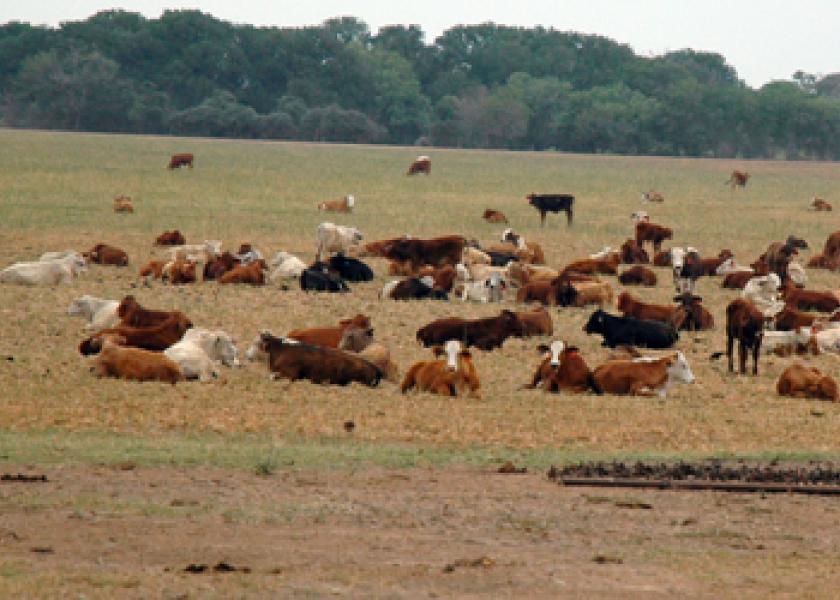Forage Situation Calls for Desperate Measures

U.S. forage supplies will be significantly lower this year, especially in an area stretching from Kansas east to New York and north into Manitoba and southern Wisconsin.
"This clearly is the worst forage situation we have seen since the 1933 drought," says Dan Undersander, forage specialist at the University of Wisconsin. "The national hay crop is going to be down significantly."
According to this week’s USDA condition ratings, 26% of the U.S. pasture and forage is rated very poor, 29% poor, 27% fair, 16% good and 2% excellent. This map depicts the total percentage of each state with pastures rated very poor or poor (click to enlarge).
To compound the problem for livestock producers, aflatoxin is already showing up in some dryland corn and nitrate levels are expected to be high. "When normal applications of nitrogen fertilizer have been made and production is half or less of what was expected, nitrate toxicity can be a problem."
Corn silage that is high in nitrates can still be fed, he says, but it has to be diluted with grain or another forage source—all of which will be scarce this year.
Last year’s drought in the southern plains devastated forage supplies there, but the region trucked hay in from Canada and the northern plains states. "Last year, we had hundreds of trucks running hay from the north to the south," says Steve Hessman, hay market analyst with USDA and the Kansas Department of Agriculture. This year, the Dakotas won’t have much, if any, extra supplies.
"Kansas is short of both alfalfa and blue stem hay," says Hessman. He estimates that alfalfa production is about 50% of normal and blue stem between 40 and 50% below normal. "When hay producers produce less hay, their use increases, too," Hessman adds. Poor grazing conditions require that they retain more hay to feed their cattle.
With the drought’s blow already dealt to alfalfa and corn growers, the soybean crop is now being eyed as a possible source of forage. "They are starting to swath some beans in central Kansas," notes Hessman. "If we don’t get rain we could see a lot of swathers running in the bean fields." Typically, soybean hay will be ground and blended with alfalfa before being fed to feeder cattle.
Kansas growers are even considering planting oats in September to see if the crop will grow large enough to be baled. "As far as I know, it’s never been done," says Hessman.
In the hardest hit area, which stretches from Iowa east to Ohio and north to southern Wisconsin, many cornfields are a complete loss. "A lot of the corn acreage in southern Wisconsin will produce less than 25 bushels per acre," says Undersander.
Dairy producers in this hard hit area have limited choices, he says. They can wait to see how much corn will be available from crop producers and then manage for mycotoxins and nitrates, or they can wait a couple of weeks to let their own corn dry down enough to ensile and then manage for nitrates. Those who can get silage off soon enough can try to plant a new crop of corn or small grain.
"Small grain seed is in short supply, and herbicide residues could restrict what grain can be planted," says Undersander. On average, he says, small grain crops planted by Aug. 1 in southern Wisconsin and south will yield about one to three tons of dry matter, while corn will yield one to four tons. "These are desperate measures," says Undersander. "And the question remains whether we will even get enough rain to replant.








